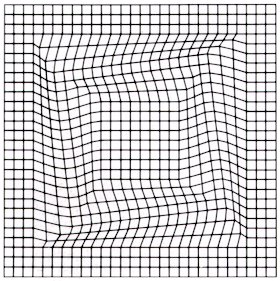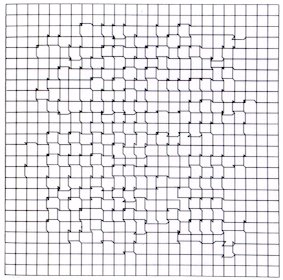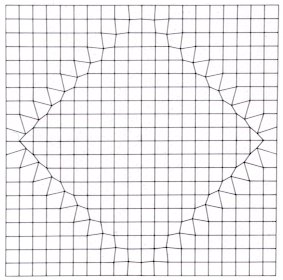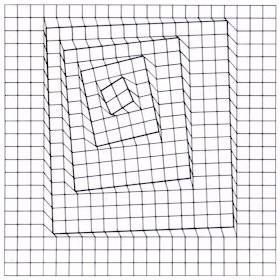|
(2) Deformed square lattices Since parallel lines were treated in the previous page, the modifications necessarily had a feature towards a direction. Let's examine this effect in the two directions of the x-axis and y-axis. In other words, it is the change and development from a one-dimensional operation to a two-dimensional operation. Therefore, a monotonous square lattice will be discussed. The shape of a Go board is very plane with little room for three-dimensional effect, and it is a diagram which looks like an origin of two dimensions. Shapes with a strange feeling of three-dimensional effect will be generated one after another by processing a part of the regular square lattice with a certain plan. Hereafter, the technique will be investigated by
categorizing it into several items. These careful and deep investigations
will lead you to a way to understand "Op-Art" truly in depth.
(i) Bending A unit lattice is deformed by bending a part of lines.
It is important to try to generate a large modeling effect by a small modification.
From it, a screen with a feeling of strain and delicacy is created.
(ii) Giving thickness A part of unit lattice is deformed assuming that the unit lattice consisting the lattice has a thickness. An idea is important here. The key is what kind of thought can be drawn in our mind. (Figs. 423, 424). The above can be achieved by using oblique lines
to deform the lattice.
|



